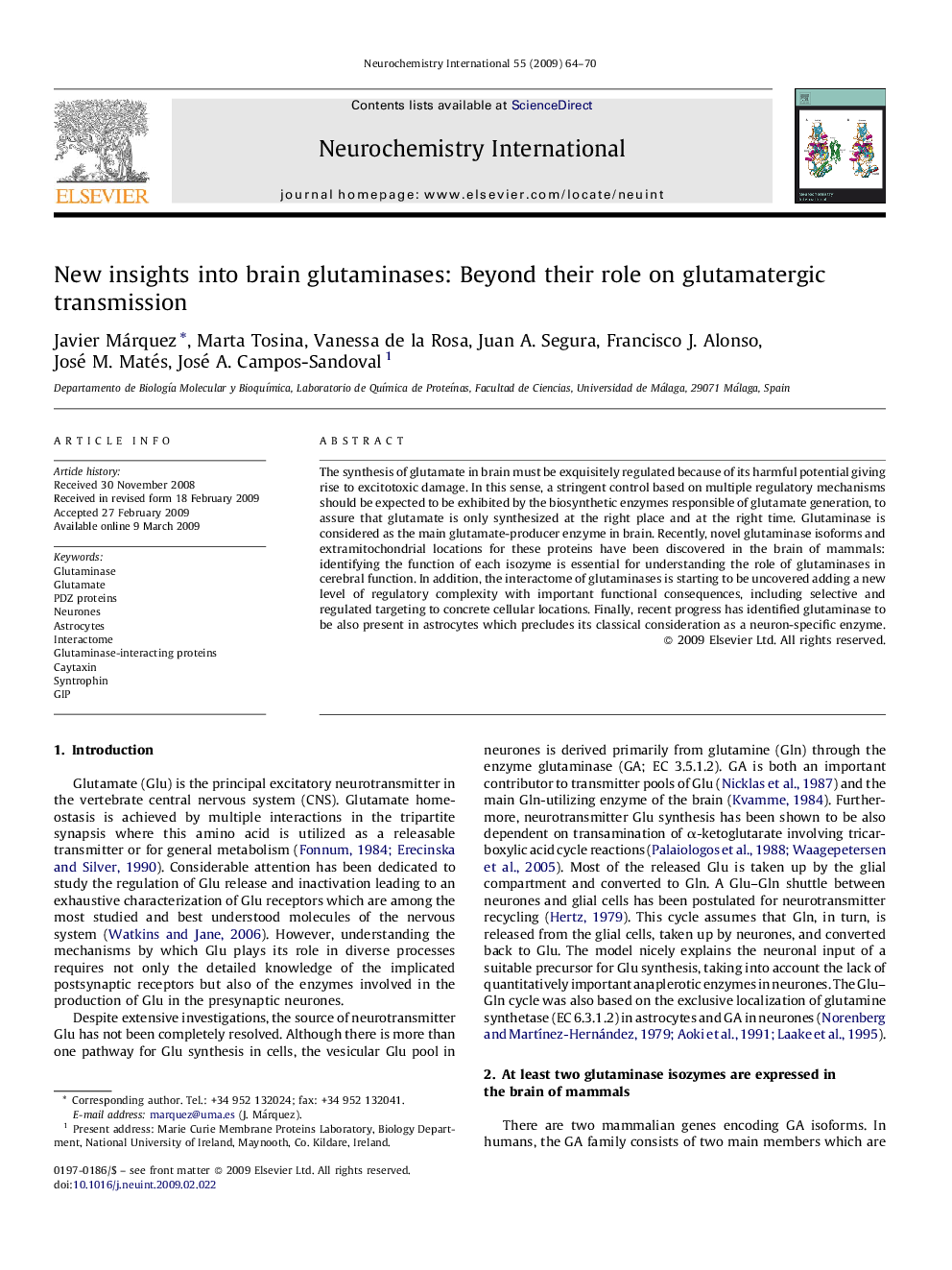| Article ID | Journal | Published Year | Pages | File Type |
|---|---|---|---|---|
| 2201473 | Neurochemistry International | 2009 | 7 Pages |
The synthesis of glutamate in brain must be exquisitely regulated because of its harmful potential giving rise to excitotoxic damage. In this sense, a stringent control based on multiple regulatory mechanisms should be expected to be exhibited by the biosynthetic enzymes responsible of glutamate generation, to assure that glutamate is only synthesized at the right place and at the right time. Glutaminase is considered as the main glutamate-producer enzyme in brain. Recently, novel glutaminase isoforms and extramitochondrial locations for these proteins have been discovered in the brain of mammals: identifying the function of each isozyme is essential for understanding the role of glutaminases in cerebral function. In addition, the interactome of glutaminases is starting to be uncovered adding a new level of regulatory complexity with important functional consequences, including selective and regulated targeting to concrete cellular locations. Finally, recent progress has identified glutaminase to be also present in astrocytes which precludes its classical consideration as a neuron-specific enzyme.
